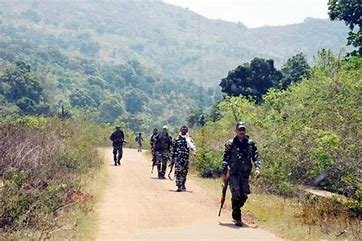Militant groups operating in the Pir Panjal valley, encompassing Rajouri and Poonch districts, are adapting their strategies to outmaneuver security agencies in an area known for its rugged terrain comparable to the mountains of Afghanistan. With 225 kilometers of the Line of Control (LoC) with Pakistan Occupied Kashmir (PoK) running through the valley, it has become a crucial battleground in the region. This article delves into the evolving tactics employed by militants, their motivations, and the challenges faced by security agencies in countering these threats.
The Pir Panjal valley, with its treacherous mountainous landscape, presents a formidable challenge to security forces. Its geography, characterized by deep gorges, dense forests, and steep slopes, allows militants to exploit natural cover for their movements and hideouts. This intricate terrain hinders surveillance and smooth coordination among security personnel, making it conducive for militant activities.
To prolong their survival and evade security agencies, militants in the Pir Panjal valley have been adopting new tactics. One notable change is the emphasis on hit-and-run attacks, with militants swiftly launching assaults on security forces and then retreating into the difficult-to-navigate terrain. This strategy not only inflicts casualties on the security forces but also denies them the opportunity to mount effective counteroffensives.
Militants are also exploiting the valley’s proximity to the Line of Control, utilizing PoK as a safe haven to seek shelter and regroup. The porous nature of the LoC allows them to cross back and forth, making it difficult for security forces to track their movements effectively. This cross-border aspect further complicates counterinsurgency operations and necessitates greater cooperation between India and Pakistan in addressing the issue.
Militants in the Pir Panjal valley have adapted to the digital age by leveraging technology and social media platforms to their advantage. They exploit encrypted messaging applications to maintain communication networks, share intelligence, and plan attacks. This utilization of technology allows them to stay one step ahead of security agencies.
Moreover, militants exploit social media platforms to disseminate propaganda, radicalize vulnerable individuals, and recruit new members. The anonymity provided by the internet aids in the expansion of their support base and helps them evade detection.
Recognizing the evolving nature of the threat, security agencies have been adapting their strategies to effectively tackle militancy in the Pir Panjal valley. They have been bolstering their intelligence networks, enhancing surveillance capabilities, and implementing targeted operations to neutralize militant leaders.
Additionally, there is an increased focus on enhancing cooperation and information sharing between different security agencies and units. The integration of technology, such as drones and advanced surveillance systems, aids in monitoring the challenging terrain and minimizing vulnerabilities.
The Pir Panjal valley’s rugged topography, akin to the mountains of Afghanistan, provides a challenging operational environment for security agencies combating militancy in the region. The evolving tactics of militants, including hit-and-run attacks, cross-border movements, and technological exploitation, pose significant challenges. It is imperative for security forces to continuously adapt their strategies, leverage technology, and strengthen cooperation to effectively counter the militant threat in the Pir Panjal valley and maintain peace and stability in the region.


